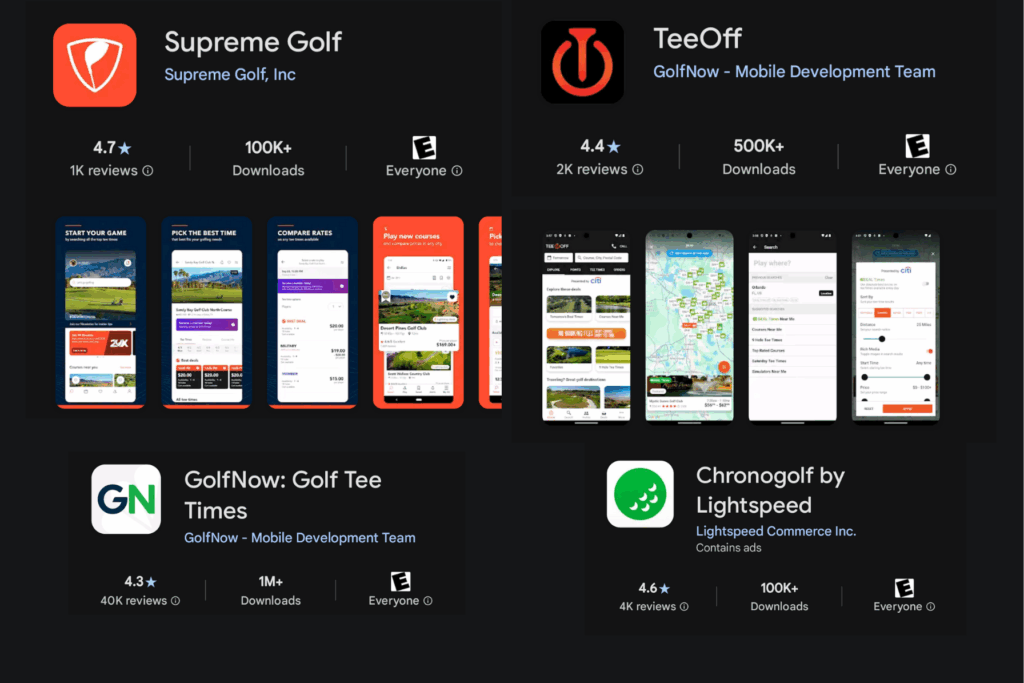Technology promised to make golf smarter. Instant yardages, green-reading visuals, and AI club picks were supposed to turn your phone into a caddie. On paper, that sounds like the edge every player wants. But if your scores have stalled while your screen time climbed, you have already felt the catch. Some tools trade focus for flash. They nudge you into chasing perfect lines, refreshing leaderboards, and second-guessing the instincts that used to feel automatic. Your swing did not change. Your attention did.
Golf Logix is a good example. The detailed contour maps and AR visuals look helpful during a quiet practice round. In real play, they can be a trap. Phones freeze. Batteries fade. The bright putting paths tempt you to read a cartoon instead of the grass under your shoes. If a feature is restricted under local rules, you flip it off mid-round, and the doubt creeps in. You had a read. Now you have a question. The best putters I teach build a simple picture, match a pace, and roll it. Apps that turn every ten-footer into a geometry lesson pull you away from that.
18Birdies creates a different challenge. It is packed with live leaderboards, side games, and little dings that demand your attention. That is fun on the range or in a weekend scramble. During a focused round, it can hijack your routine. I have also seen yardages drift by several yards and club suggestions miss the mark when wind and elevation shift. That tiny gap matters to a player who wants to hit a number, not a neighborhood. When the phone tells you one thing and your eyes say another, tempo suffers.

GolfNow makes booking easy, and it’s still one of the best tee time apps available, but the cheapest windows often line up with the busiest sheets. You save ten dollars and pay it back with a five-hour grind behind a logjam of foursomes. Prepaid rules can add stress if plans change. If you want pure value, call the shop, ask about twilight, local specials, and pace patterns, and book like a regular. If you do use an app, read recent reviews for the exact time you are buying. Pick the round you will enjoy, not only the price you want to see.
Shot Tracer scratches a different itch. Everyone loves a ball-flight replay. The problem is that calibration is touchy and misses are common. Now you are moving tripods, re-aiming a phone, and discussing a clip that may not tell the truth. Your group waits. Your attention wanders. Keep it for the range, or for a quick post-round recap that you film on an empty tee. Believe your ball flight and your divots more than a shaky trace.
Even SwingU, a solid brand, can get in your way. The free version leans on ads and upsells, which cuts into the rhythm. Shot tracking often leaves out real-world messiness like a duffed approach followed by another try from a new number. GPS drift on a couple of holes sends you hunting for confirmation from a partner. A good routine invites clarity. Doubt is loud.
So what should you do if you want the benefits without the baggage? Keep the tech, but make it quiet and purposeful. Before the round, download course maps, set your phone to Do Not Disturb, and validate a few holes against a laser rangefinder. If your app allows a competition mode that locks out coaching and green-reading aids, use it. On the greens, build a simple three-step process: feel the slope with your feet, pick a start spot, pick a pace. Save the slope maps for practice rounds where you can learn patterns without a card in your pocket.
For tee times, try a simple script. First, call the shop and ask for the best combination of pace and value this week. Second, if you browse apps, check pace reviews for that exact time. Third, avoid the hottest deal window if reviews call it slow. A cheaper round that steals your rhythm is not a deal.
Here is the payoff if you want a cleaner next round. Bring a rangefinder. There are plenty of budget rangefinders available. Use one GPS number from a quiet app screen only if the laser is not practical. Track three stats on a scorecard with a pencil: fairways, greens, and total putts. After the round, record one note for each hole you bogeyed. No swing tips. Just decisions and targets. If you need video or ball-flight fun, do it on the range that night.
Technology can be a great coach before and after the round. On the course, your best tools are calm focus, a clear target, and a repeatable routine. Keep the phone in service of those things. Trust your eyes. Trust your feel. Let your game, not your screen, decide the score.
The views expressed in this article are those of the author and do not necessarily reflect the opinions of Golfspan or its editors.
Clint is PGA-certified and was a Head Teaching Professional at one of Toronto's busiest golf academies. He was also featured on Canada's National Golf TV program, "Score Golf Canada," twice. He graduated with a degree in Golf Management from the College of the Desert in California and studied under Callaway's co-founder, Tony Manzoni. He has a handicap index of 6.2 and spends the winters near Oaxaca, Mexico, where he plays twice a month at the Club de Golf Vista Hermosa. He's written over 100 articles at GolfSpan since 2021. You can connect with Clint at LinkedIn, FB, his website, or Clintcpga@gmail.com.







